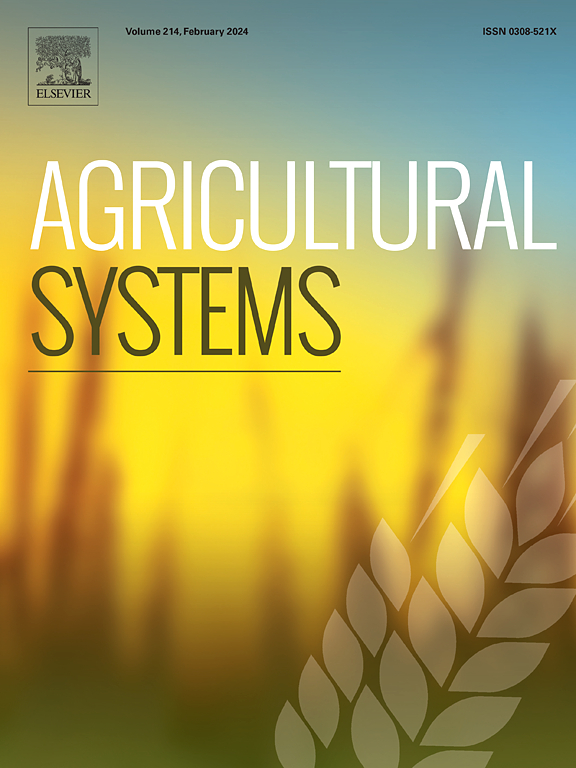Towards an improved representation of the relationship between root traits and nitrogen losses in process-based models
IF 6.1
1区 农林科学
Q1 AGRICULTURE, MULTIDISCIPLINARY
引用次数: 0
Abstract
CONTEXT
Nitrogen (N) application to crops is crucial to feed an increasing world population. Yet, much of this N is not taken up by crops, initiating a cascade of N losses with dire environmental and economic consequences. There is, therefore, a need to develop crops with traits that make them use N more efficiently, thereby reducing N losses. Process-based models have been used to design in-silico crops with desirable traits to maximize yield and increase climate resiliency, but few have been used with the perspective of reducing N losses.
OBJECTIVE
To examine the way process-based models capture interactions between root traits and N losses, and propose opportunities to improve model representation of observed relationships.
METHODS
We synthesize the current knowledge on the relationships between plant traits and N losses based on experiments reported in the literature, conduct a survey of process-based models simulating crop growth and N losses, and run a sensitivity analysis with selected models (DSSAT, APSIM, DNDCvCAN, Daisy).
RESULTS AND CONCLUSIONS
The results show that the relationships between root traits and N losses can be very strong in experiments, but model simulations do not capture the magnitude of these associations well. This is mainly due to the lack of a robust representation of the plant root mechanisms influencing N losses. Suggested model improvements include designing new functions to link root traits with key N-cycling processes supported by experimental evidence – such as root exudation of various compounds including biological nitrification inhibitors – and using easily observable morphological traits in process-based models as proxies to predict changes induced by plants on N-cycling by soil microbial communities.
SIGNIFICANCE
This work represents a key step towards designing novel root function-based ideotypes adapted to reduced fertilizer inputs while maintaining the same level of yield, and that is, therefore, potentially less harmful to the environment.

在基于过程的模型中对根系性状和氮损失关系的改进表示
作物施氮对于养活不断增长的世界人口至关重要。然而,大部分氮素没有被作物吸收,导致了一连串的氮素损失,造成了可怕的环境和经济后果。因此,有必要开发具有更有效利用氮的性状的作物,从而减少氮的损失。基于过程的模型已被用于设计具有理想性状的硅作物,以最大限度地提高产量和提高气候适应能力,但很少用于减少氮损失的角度。目的研究基于过程的模型如何捕捉根性状与N损失之间的相互作用,并提出改进观察到的关系的模型表示的机会。方法在文献实验的基础上,综合现有植物性状与氮素损失关系的研究成果,对基于过程的作物生长与氮素损失模拟模型(DSSAT、APSIM、DNDCvCAN、Daisy)进行敏感性分析。结果与结论结果表明,在试验中,根系性状与氮损失之间的关系可能非常强,但模型模拟不能很好地捕捉到这些关联的程度。这主要是由于缺乏对影响氮损失的植物根系机制的可靠描述。建议的模型改进包括设计新的功能,将根性状与实验证据支持的关键氮循环过程联系起来,如各种化合物(包括生物硝化抑制剂)的根渗出,以及在基于过程的模型中使用容易观察到的形态性状作为代理来预测植物对土壤微生物群落氮循环的变化。这项工作代表了设计新的基于根功能的理想型的关键一步,该理想型适应于减少肥料投入,同时保持相同的产量水平,因此对环境的危害可能更小。
本文章由计算机程序翻译,如有差异,请以英文原文为准。
求助全文
约1分钟内获得全文
求助全文
来源期刊

Agricultural Systems
农林科学-农业综合
CiteScore
13.30
自引率
7.60%
发文量
174
审稿时长
30 days
期刊介绍:
Agricultural Systems is an international journal that deals with interactions - among the components of agricultural systems, among hierarchical levels of agricultural systems, between agricultural and other land use systems, and between agricultural systems and their natural, social and economic environments.
The scope includes the development and application of systems analysis methodologies in the following areas:
Systems approaches in the sustainable intensification of agriculture; pathways for sustainable intensification; crop-livestock integration; farm-level resource allocation; quantification of benefits and trade-offs at farm to landscape levels; integrative, participatory and dynamic modelling approaches for qualitative and quantitative assessments of agricultural systems and decision making;
The interactions between agricultural and non-agricultural landscapes; the multiple services of agricultural systems; food security and the environment;
Global change and adaptation science; transformational adaptations as driven by changes in climate, policy, values and attitudes influencing the design of farming systems;
Development and application of farming systems design tools and methods for impact, scenario and case study analysis; managing the complexities of dynamic agricultural systems; innovation systems and multi stakeholder arrangements that support or promote change and (or) inform policy decisions.
 求助内容:
求助内容: 应助结果提醒方式:
应助结果提醒方式:


